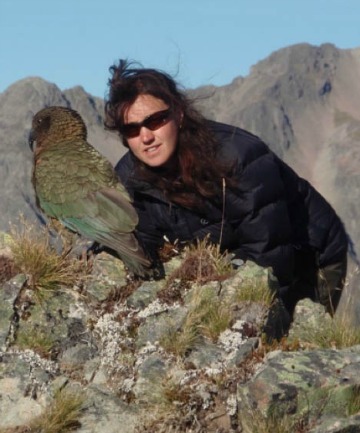Kea decline threatens alpine plants
 Saturday, November 3, 2012 at 2:20
Saturday, November 3, 2012 at 2:20  VITAL FUNCTION: University of Canterbury PhD student Laura Young is studying kea behaviour and how the bird helps maintain native plant life. A decline in kea numbers is threatening alpine plants that rely on the bird for seed dispersal, a researcher says.
VITAL FUNCTION: University of Canterbury PhD student Laura Young is studying kea behaviour and how the bird helps maintain native plant life. A decline in kea numbers is threatening alpine plants that rely on the bird for seed dispersal, a researcher says.
University of Canterbury lecturer Ximena Nelson said there were fewer than 5000 of the nationally endangered parrot left - bad news for about 12 per cent of the country's alpine plants that relied on the bird for seed dispersal.
Nelson said PhD student Laura Young had found that kea spent much of their time eating fruit.
Previously it had been assumed that the kea's beak would break the seeds, contributing little to seed dispersal.
"Laura's work showed that kea selected more fruiting species, consumed more fruit and dispersed more seeds than all other birds seen in the mountains combined," Nelson said.
"When she looked carefully at the seeds contained in hundreds and hundreds of kea faeces, she found that in fact almost all seeds were intact."
Nelson said kea were the only species that made frequent long-distance flights within and between mountain ranges, which was vital for spreading alpine flora.
"These large birds can damage motor vehicles, buildings and signs, yet they can manipulate delicate items with considerable dexterity, providing another good reason to cherish these clever birds," she said.
 Nestor notabilis - Kea | in
Nestor notabilis - Kea | in  Conservation
Conservation 
